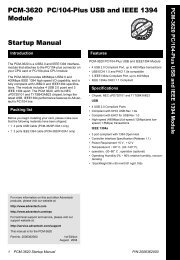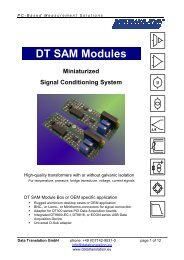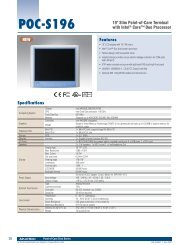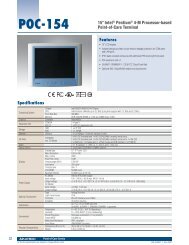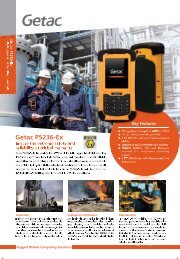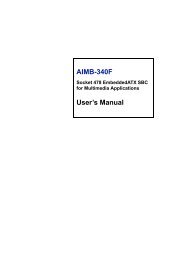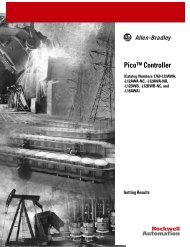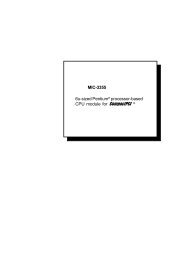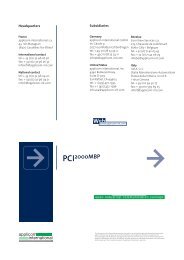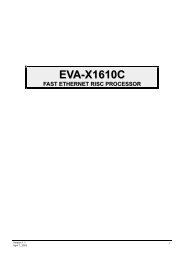1747-6.22, Backup Scanner User Manual
1747-6.22, Backup Scanner User Manual
1747-6.22, Backup Scanner User Manual
You also want an ePaper? Increase the reach of your titles
YUMPU automatically turns print PDFs into web optimized ePapers that Google loves.
5-70 <strong>Scanner</strong> Configuration and Programming<br />
Publication <strong>1747</strong>-<strong>6.22</strong><br />
Rung 2:0<br />
To decrease program scan time, copy the first four words of the M1 file to a binary file and use<br />
these addresses throughout the program to access block transfer done, error, data, etc.<br />
information without interrupting the program scan many times.<br />
| +COP±±±±±±±±±±±±±±±±+ |<br />
|±±±±±±±±±±±±±±±±±±±±±±±±±±±±±±±±±±±±±±±±±±±±±±±±±+COPY FILE | |<br />
| |Source #M1:1.100| |<br />
| |Dest #B3:0| |<br />
| |Length 4| |<br />
| +±±±±±±±±±±±±±±±±±±±+ |<br />
Rung 2:1<br />
Examine B3/13 (B3: 0/13), an internal storage bit, to determine when a block transfer is done. Note that<br />
examining multiple individual M-file bits directly (every scan) can measurably increase processor scan time<br />
| BT DONE |<br />
| B3 +COP±±±±±±±±±±±±±±±±+ |<br />
|±±±±] [±±±±±±±±±±±±±±±±±±±±±±±±±±±±±±±±±±±±±±±±±±+COPY FILE | |<br />
| 13 |Source #M1:1.110| |<br />
| |Dest #N10:0| |<br />
| |Length 64| |<br />
| +±±±±±±±±±±±±±±±±±±±+ |<br />
|<br />
Rung 2:2<br />
Examine B3/12 (an internal storage bit) to determine if a BT error occurred. Buffer the BT status<br />
from B3:3 if an error does occur.<br />
| B3 +MOV±±±±±±±±±±±±±±±±+ |<br />
|±±±±] [±±±±±±±±±±±±±±±±±±±±±±±±±±±±±±±±±±±±±±±±±±+MOVE |<br />
| 12 |Source B3:3| |<br />
| | 0000000000000000| |<br />
| |Dest N10:64| |<br />
| | 0| |<br />
| +±±±±±±±±±±±±±±±±±±±+ |<br />
Rung 2:3<br />
| |<br />
|±±±±±±±±±±±±±±±±±±±±±±±±±±±±±±±±±±±±±+END+±±±±±±±±±±±±±±±±±±±±±±±±±±±±±|<br />
| |<br />
Important: If you are using an SLC 5/02 processor M file data<br />
cannot be directly monitored. To monitor M files, you<br />
must move the M file words into an SLC file that can be<br />
monitored, e.g., an integer “N” file. SLC 5/03 or later<br />
processors allow you to monitor M files directly.<br />
However, do not address M file bits more than necessary<br />
throughout your application program. The processor<br />
accesses M files like immediate I/O. Therefore,<br />
excessive addressing of M files can greatly increase SLC<br />
processor scan time. For more information on M files,<br />
refer to Appendix B.




